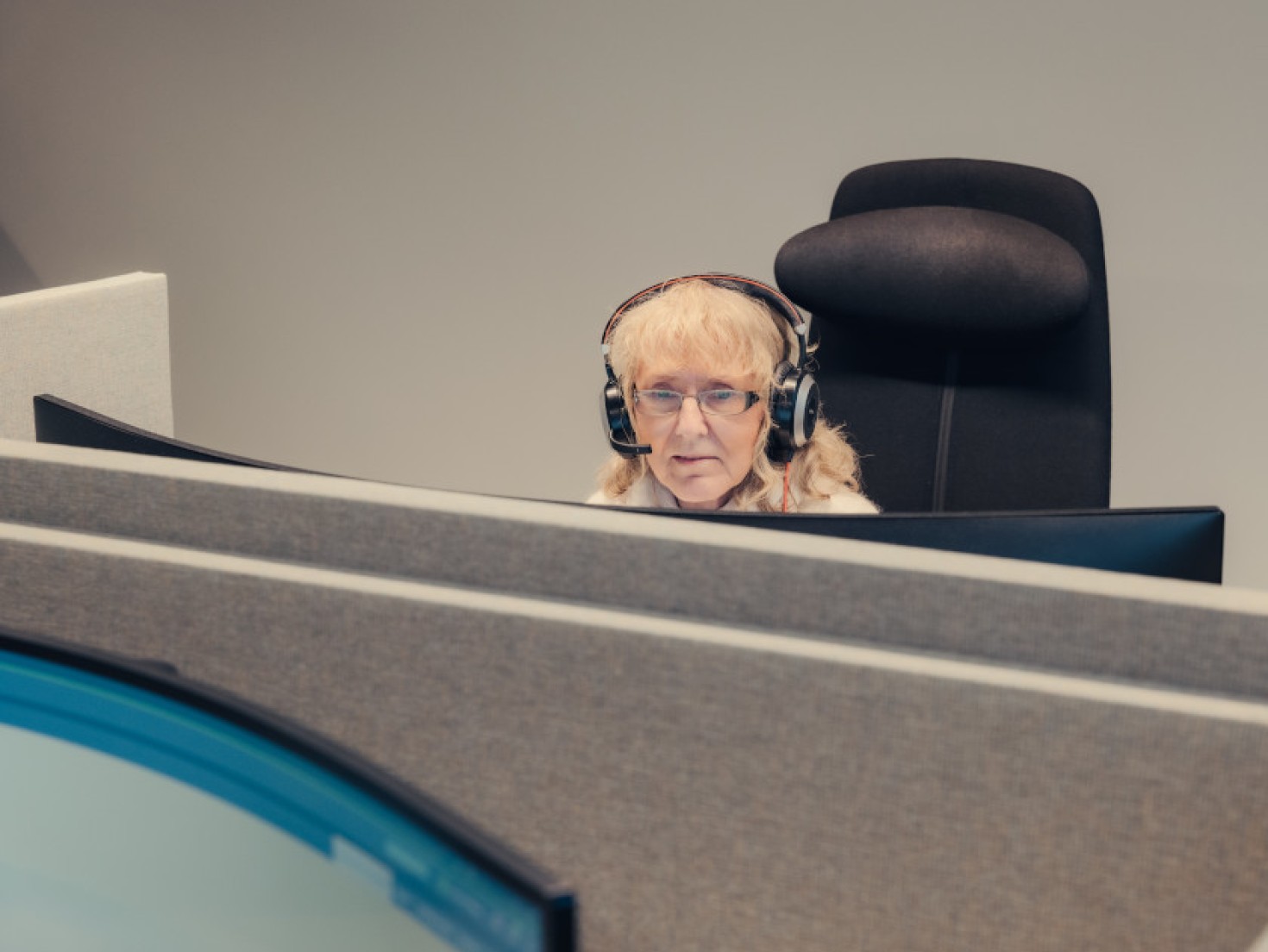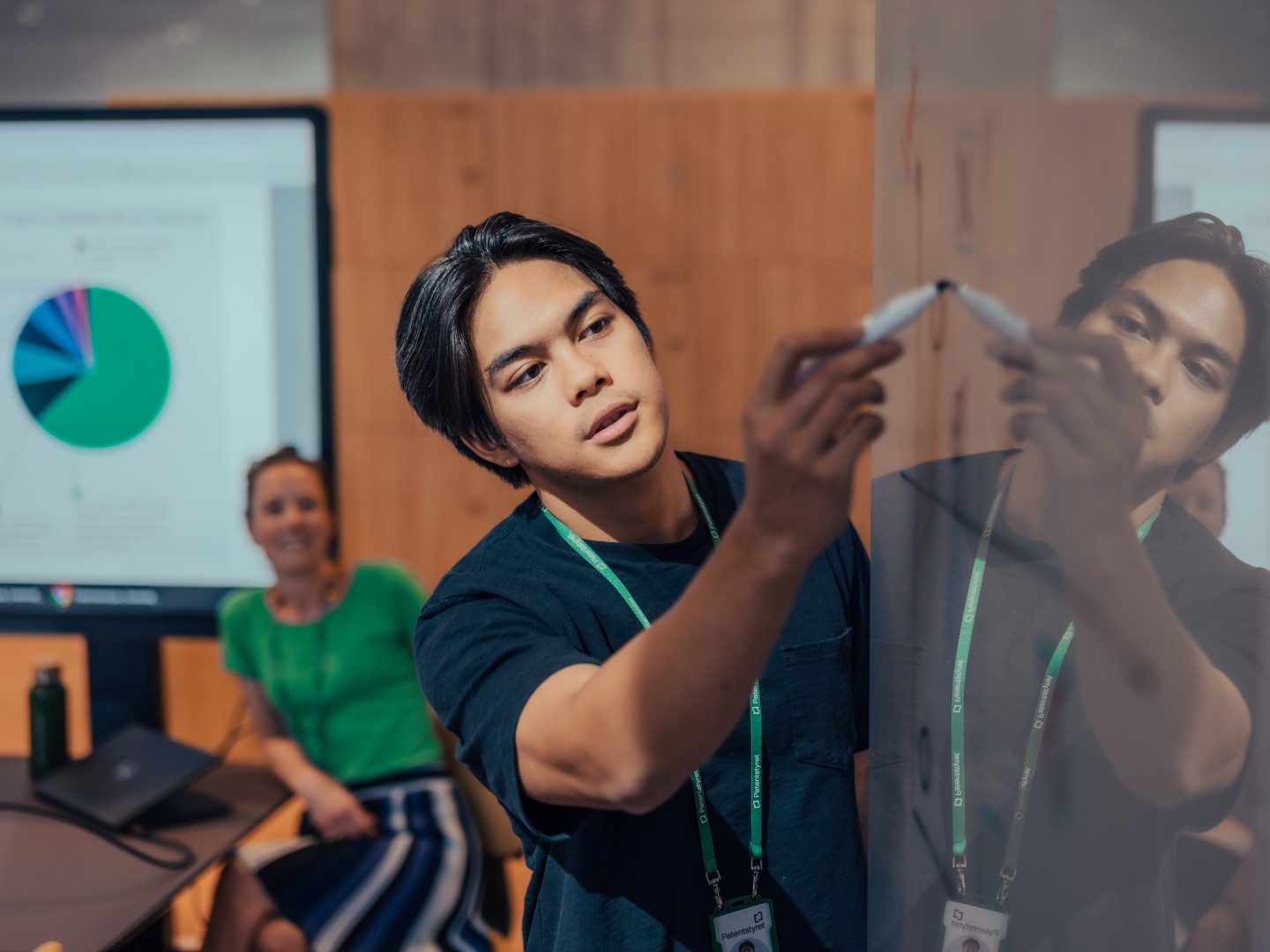Questions and answers about intellectual property rights
This subject area may be unfamiliar to many, and the Norwegian Industrial Property Office (NIPO) uses a number of subject terms that not everyone is familiar with. Here we have collected answers to some of the questions many people ask.
Intellectual property rights and assets
Intellectual property (IP) refers to non-physical assets.
This can include inventions, trademarks, designs, production processes, methods, databases, as well as know-how and trade secrets. It also covers rights to company names, authors' and artists' rights, photography rights, and the right to circuit layouts for integrated circuits.
The terms IP (intellectual property) and IPR (intellectual property rights) are often used interchangeably.
Intellectual property rights (IPR) is a collective term that includes, among other things, patent rights, trademark rights, design rights, utility models, rights to company names, authors' and artists' rights, photography rights, and rights to circuit layouts for integrated circuits.
It grants the holder exclusive rights to exploit their intellectual creation.
Intellectual property rights are an increasingly important part of the foundation for innovation and value creation. The internationalization of research, business, and technology has put these rights under greater pressure than before.
The Norwegian Industrial Property Office plays a key role in ensuring that rights and the values they represent are protected.
Industrial property rights primarily provide protection in the form of patents, trademark, or design registrations.
They grant the holder exclusive rights to exploit their invention, trademark, or design. Industrial property rights are becoming an increasingly important part of the foundation for innovation and value creation. The internationalization of research, business, and technology means these rights are under greater pressure than before. The Norwegian Industrial Property Office (Patentstyret) plays a key role in ensuring that these rights and the values they represent are safeguarded.
Also known as litigation insurance or patent insurance, IPR insurance helps mitigate the financial risks associated with intellectual property disputes.
Intellectual property disputes can be costly, especially when faced with high legal fees, litigation costs, or compensation. IPR insurance can significantly reduce these financial burdens by covering such expenses.
Copyright is the right to literary and artistic works, such as a piece of music, a book, a painting, applied art, or a film.
Different types of protection
A work of authorship is protected by copyright. This refers to the rights for literary and artistic works, such as a piece of music, a book, a painting, applied art, or a film.
The Ministry of Culture and Equality is the responsible government department for copyright. There are also several copyright organizations that can be contacted.
A trademark is a distinctive identifier for goods and services. It can include, among other things, names, words, logos, and symbols. You can protect a trademark from imitation by applying for trademark registration with the Norwegian Industrial Property Office. A trademark can only be registered if it is capable of distinguishing your goods and/or services from those of others.
A domain name is an address on the internet. It is common to link services such as websites or email addresses to the domain name.
A domain name is unique worldwide and corresponds to an Internet protocol address. For example: www.patentstyret.no is the domain name of the Norwegian Industrial Property Office.
Also known as a protected designation. It is a public labeling system that ensures Norwegian food products receive the protection and recognition they deserve.
Many food products are the result of long-standing traditions, high levels of knowledge, and raw materials grown under very favorable conditions. This contributes to giving the products their unique taste and characteristics.
Following the model of EU countries, it is possible in Norway to register a protected designation for Norwegian agricultural-based food products, fish, and seafood.
Examples
It is prohibited to use geographical names for wine and spirits that do not originate from the specified geographical area. One example is champagne. It is not permitted to use the term "champagne" for sparkling wine unless it is produced in the Champagne region of France.
The Norwegian Food Foundation
The labeling system is managed by the Norwegian Food Safety Authority through the Norwegian Food Foundation (formerly Matmerk). The system provides an opportunity to protect product names for these types of goods if they have a special geographical origin, tradition, and distinctive qualities.
You can find more information about geographical indications and protected names on these websites.
Patenting an invention grants exclusive rights to commercially exploit the invention for 20 years. To obtain a patent, you must submit an application to the Norwegian Industrial Property Office. The invention must provide a practical solution to a problem, with a technical nature, technical effect, and the ability to be reproduced. The invention must also have "inventive step," meaning it must be new and significantly different from previously known techniques in the field.
A utility model registration is a form of protection for inventions that are used in several countries.
It is common for such protection to have lower requirements for inventive step than patents, and the protection period is usually shorter.
Certain technology areas may also be excluded, and the fees are often lower.
Norway does not offer this type of protection.
Business ideas, business concepts, or business methods cannot, in principle, be registered as patents, trademarks, or designs.
This means that you cannot obtain protection for something that is simply an idea. However, it may be possible to protect certain parts of a concept or method.
Business method: How business activities can be conducted.
Business idea: The general and fundamental idea behind the business.
Business concept: Individual elements combined into a whole. The whole represents how business activities can be carried out. Examples include franchise concepts or TV formats.
A design refers to the appearance and shape of a product, or parts of a product. The term also includes non-physical objects, such as web screenshots, graphic symbols, and more. To be eligible for protection through registration, the design must be new and must not have been made public for more than 12 months.
The individual or entity that owns the patent, trademark registration, or design registration is referred to as the holder. The term "applicant" may also be used to refer to the holder of the application.
In the context of patents, the term "patentee" is also commonly used.
Brand and market
A brand is a product introduced to the market under a distinct name, with consistent packaging and quality.
The term "brand" has multiple definitions and is used in various contexts.
A brand represents the collective associations customers have with a product, company, or individual. In other words, it's how customers describe the product, company, or person. A strong brand means that these associations are unified and clear.
Branding is the process of adding value to a brand, so that consumers perceive they are purchasing more than just a product.
Branding often includes the addition of a symbol or logo to the product. With consistent marketing over time, this symbol helps customers link the product with quality, specific features, benefits, and, ultimately, trust.
When we refer to "commercial origin," we are talking about the entity responsible for producing or selling a product or service.
We talk about product imitation when there are two "genuine" products from two different manufacturers, where one has imitated the other.
For example, the shape of a well-known design vase is imitated by a cheaper brand, or the shape and material of a popular flashlight are copied by a competitor, but with the competitor’s own trademark. In product imitation, the product closely resembles one that someone else has already made, but does not claim to have the same origin as the original item.
The production and sale of imitations can be covered by the Marketing Act, which states that one should not exploit others' efforts or results in an unfair manner.
As a manufacturer, you can have a stronger position in the fight against product imitations if you have registered rights, such as a design registration.
Pirated copies are products that attempt to appear as genuine products. They often pretend to have a commercial origin to which they have no connection.
A business network refers to the group of potential buyers and sellers involved in the exchange of goods or services.
It serves as a benchmark to assess how a brand is perceived by those who may engage with it in a real buying and selling context, covering all stages of the sales process.
The composition of the target group, however, varies depending on the type of goods or services being offered.
For example, the sales network for "swimsuits" includes everyday consumers, professional swimmers, employees in sports stores, and manufacturers of sportswear and textiles.
In contrast, the network for advanced equipment in the oil industry will not include ordinary consumers. Instead, it will consist primarily of professionals at all levels of the industry.
Learning and knowledge
We can inform you about the characteristics of different areas of rights – patents, trademarks, and designs. We can answer questions about what is required to apply for rights and what it may mean for you and your business.
If you need specific suggestions for improving your idea or help in choosing a strategy for protecting and exploiting your idea, you should contact a law firm or a patent agency. Such advice is beyond the scope of our duties as a public authority.
You can participate in our courses, Q&A sessions, and seminars on intellectual property rights and related areas, or you can watch recordings of past events in our course portal. You can also receive our newsletters by filling out and submitting the newsletter registration form.
You can find information about registered patents, trademarks, and designs in our database. If you're considering markets beyond Norway, you should expand your search and also use international databases.
We offer preliminary searches for those who need help searching and/or interpreting the results.

Contact our customer service center

10 tips for getting started with intangible assets
Published on 06. august 2024

Why do I need to know something about trademarks, designs and patents even if I am not going to protect anything?
Published on 23. april 2019

What do the symbols used for trademarks, copyright and design mean?
Published on 06. february 2019